I’ve finally seen and culled the 1900+ photos I took of these butter-butts a week ago today. The following day I posted two of them but since then I found more that I like so I’m including some of them today.
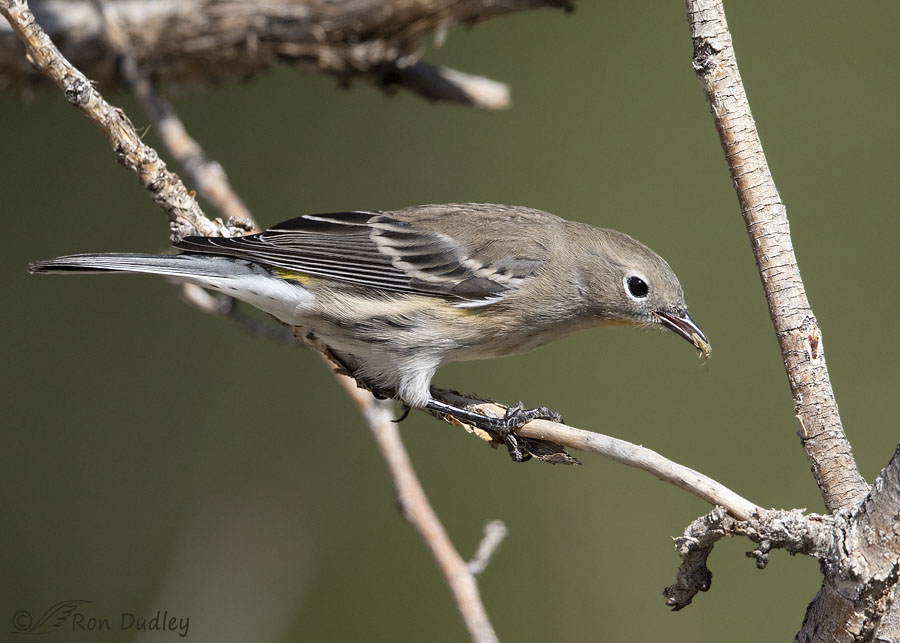
The warblers were attracted to all the insects flying over the surface of a pond. An old dead tree hangs over the pond and they were using its branches as hunting and launching platforms to hawk the bugs. Because the tree has been dead for several years the branches were sun-bleached and often fairly unattractive but the birds like them so I won’t bellyache about them.
This bird has one of the insects it captured over the pond in its bill.
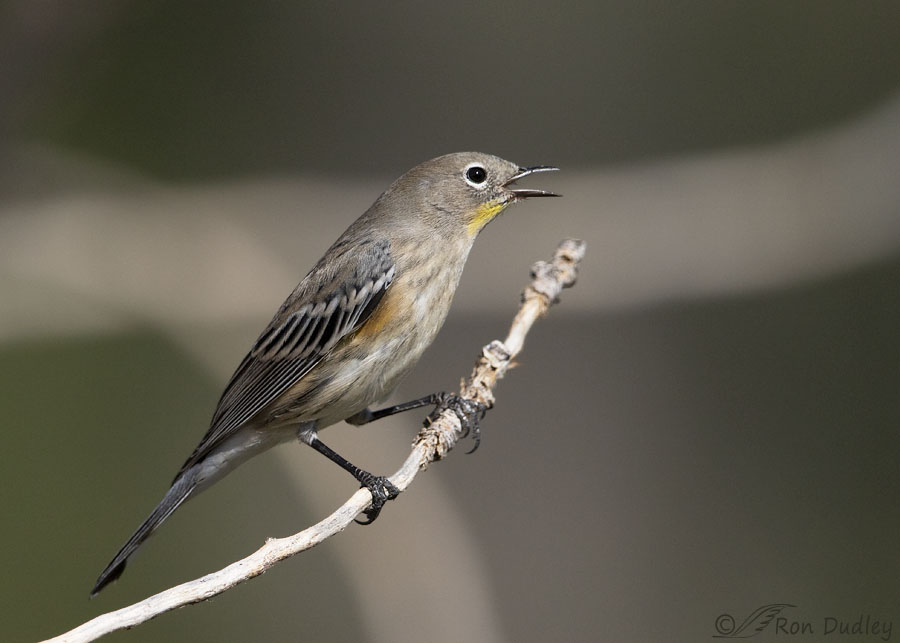
It may look like this warbler is singing but it was actually panting (more accurately called ‘gular fluttering’ in birds). That late afternoon temps were in the high 80’s and catching insects on the wing is a strenuous activity so quite a few of the warblers were panting.
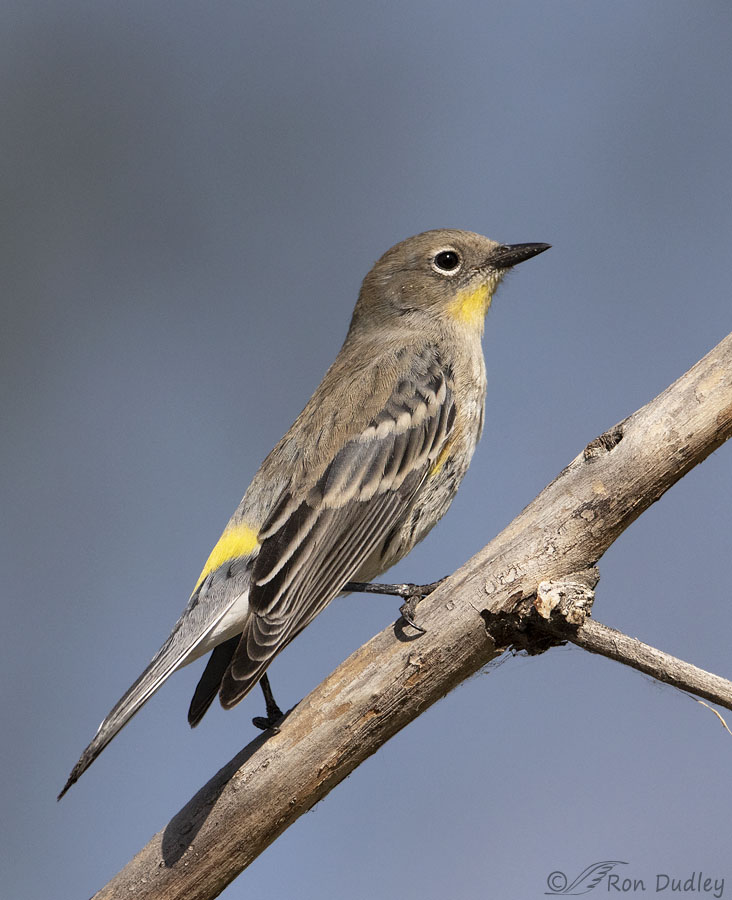
In that old tree cluttered with dead twigs getting a fairly clean background was difficult. But this bird gave me a background with no distractions and several poses that I like including this one and…
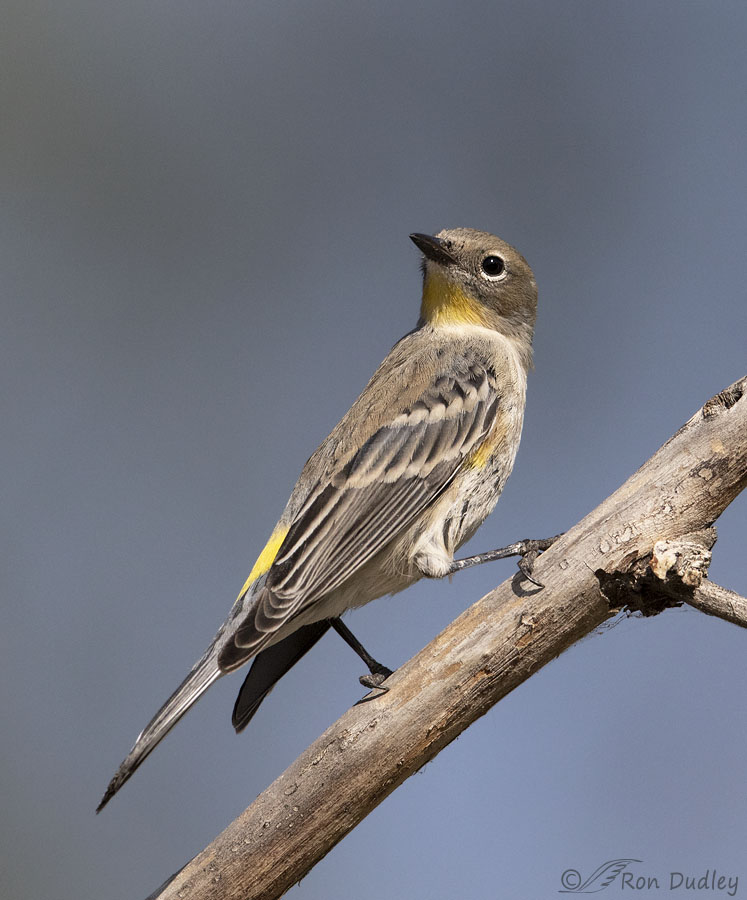
this one.
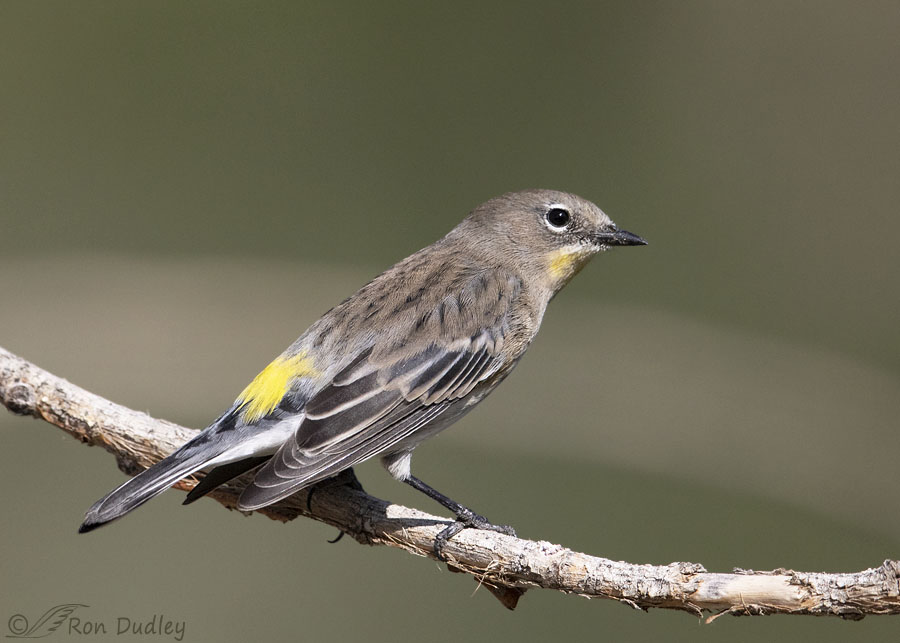
Here’s a classic pose that shows off the namesake yellow rump of the species to its best advantage.
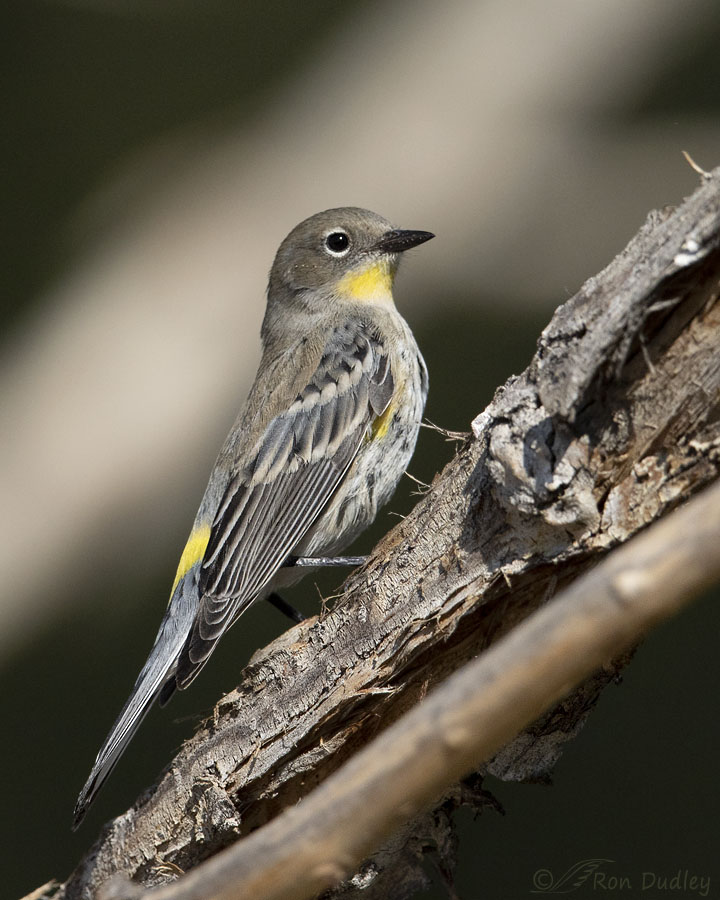
Here the piece of bark that had peeled off of the branch at bottom was still clinging to it. I wish the branch itself was sharper but I like the unbleached bark with far more character than most perches I got that day.
A couple of days after these photos were taken I went back to this location looking for warblers but the tree was eerily quiet and devoid of birds of any kind.
Migrating songbirds are nothing if they’re not ephemeral.
Ron


Nice photos and helped me confirm that it was a “butter- butt” that I saw last week.
The first two butts are elusive in their butteriness. 😉
Kudos to you for both taking 1900+ shots and then culling all of them. You are amazing! 🙂
“You are amazing!”
Or I have OCD.
If I see birds moving fast I simply have no choice but to lay on the shutter button and face the consequences later. And these birds were moving like greased lightning.
Well dang those are nice pictures. I can’t imagine going thru that many photos to find some nice ones. Thanks for the posting.
Thanks, Trudy. It was a tedious process, that’s for sure.
All beautiful but I’ll go for the second photo:; primaries, secondaries, tertiaries(?) all neatly arranged. Now, for the belly feathers (hey, if you can say panting can I say belly?).
Sorry, again. That would be the 3rd and 4th…ah, hell, they’re all showing them.
Thanks, Lyle. Of course you can say belly. I say it often here, in my text and in my comments. And for ‘informal’ use I prefer panting over gular fluttering in most cases.
That was quite a stint in front of the screen, but the payoff was wonderful. When the Yellow-rumps get down here to south Florida I have mixed emotions, as it means that migration is winding down. I do not have good statistics but I have seen fewer of this species the past few winters. Catbirds arrived this week and they do provide quite a distraction as they are so numerous.
Catbirds in winter would be a novelty to me, Kenneth. One I’d like to experience.
1900 photos to cull!!!! I hope (fervently) that these are a small (but stunning) selection of the keepers.
In our summer months we see a LOT of gular fluttering. And, while I did know the term, it had escaped me again. Hopefully it will stick this time.
EC, I just call it panting. Shorter and easier to say… 🙂
So Pretty! I hope I have them again this winter in my yard. I usually have the peanut butter suet out by now for them but it is too hot still and it melts out to the ground!
April, I’ve never seen one in my yard.
Yellow-rumped Warblers are always fun to have around. Just curious… Which form do you most commonly have? During the breeding season the Audubon’s form (yellow throat) breeds here. In migration, the Myrtle form (white throat as in your photos) is often more numerous and during the winter we see both forms about equally. It’s delightful to have this species here as a common. winter species. They survive our winters just fine. They are often seen hawking insects now but during winter, they glean insects from plant surfaces and they love suet products at feeders. They also can eat winter berries. They are one of the few birds that can digest wax (honeyguides and many sea going birds also can digest wax) and over-wintering berries often have a waxy cuticle to protect the berry which also makes them unavailable to most birds. (Some larger birds, like robins, simply crush the berry but the warblers swallow them whole.
Dan, I mostly see Audubon’s. In fact I don’t believe I’ve ever photographed a Myrtle.
That’s fascinating about their ability to digest wax.
Myrtles are often considered and “eastern” subspecies by many US birders but that’s just a US bias. They are found all across Canada to British Columbia. Some of those birds move south to our area in fall and winter. I assume that the ones breeding in Canada north of you must migrate eastward first in the fall if you don’t see them where you are. Interesting to note the different patterns of movemant.
You were surely in the right place at a great time ! I enjoyed all of these
shots–my favorite was the “looking back” one. Also, the one in which the
bird was panting had a unique compositional element– the out-of-focus
branches in the background added an interesting, totally abstract element
that I think was a good foil for the precisely detailed bird…..
Kris, I’d been back to that spot many times looking for the warblers because they’ve been there several times this time of year in previous years. But I always struck out until that day. Like I said, migrating songbirds are ephemeral.
These are fantastic…most difficult to pick a favorite for sure! I do think your last photo falls into the ‘official portrait’ category. I think everyone one would love to claim that photo as theirs… 😍! A new term I’m glad to learn…’gular fluttering’. I’ve gotten many photos of birds ‘panting’ …some in particular of a marsh sparrow standing on a mat of rushes and almost appearing to fall over with his beak wide open…( an extremely hot and humid morning that I sitting in my car with the air on still felt uncomfortable.) I guess I never thought to look for a term for it…now inquiring minds know! Thank you!
“I think everyone one would love to claim that photo as theirs… ”
I’m delighted to hear that, Kathy. Believe it or not I very nearly didn’t post that photo because of the out of focus branch in the foreground at the bottom of the frame.
Agree with Arwen – the last one and the looking back one. All excellent though of one of my favorite winter birds here. We are just now starting to see a few. Can’t believe you had to cull though 1900 photos. I am shocked when I come home with 400 or so.
That’s a lot of photos even for me Everett. It’s even crazier when you realize I took them all in just over a half hour. It was a shooting frenzy.
Beautiful and fun! 😀 Could be barbed wire they were sitting on……😉 There and “gone” sure it the pattern for migration. Mostly in the “gone” phase here at the moment tho with the multiple “there’s” we’ve had this fall I’m not ready to say it’s done for the year! #4 is a really nice “portrait” tho all show the warbler off VERY well……
“Could be barbed wire they were sitting on”
Good point, Judy. Another reason I won’t complain about those bleached branches and twigs.
It’s hard to pick a favorite! The last one definitely, but I love the one where it is looking back.
Thanks, Arwen. Glad you like that ‘looking back’ photo. I was afraid posting two shots of that bird might seem redundant.